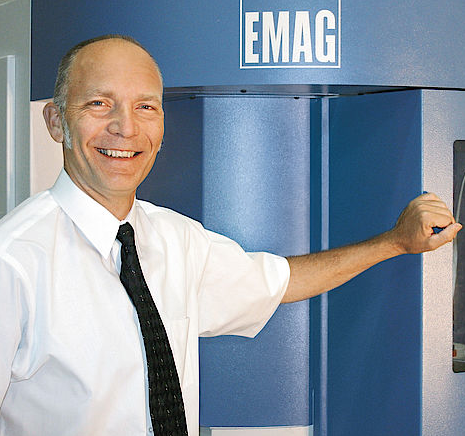
Farmington Hills, Mich.-based EMAG LLC held an open house and ribbon-cutting ceremony June 8 to celebrate the opening of its new laser welding laboratory. The facility features equipment and a staff of experts to enable automotive supply-chain companies to better fabricate differential gears, camshafts and other components using laser welding technology.
“We are opening up the laser welding business to suppliers who would otherwise not have access to it,” said Peter Loetzner, the company’s CEO. Only the largest top-tier suppliers have traditionally had the in-house expertise to utilize laser welding and, therefore, offer the lightweighting and production benefits that come with the technology. With the help of this lab, “a traditional Tier 2 automotive supplier, for example, with no prior knowledge of this technology will, nonetheless, now be able to offer high-quality laser-welded parts,” he said.
Loetzner emphasized that the lab is not just a training facility but a place to help customers solve specific problems, such as those involving seam design or fixture design. Once a supplier makes the investment in a laser welding system, EMAG will work with the company to ensure it can produce the parts its customers want. For customers who already have a laser welding system on their shop floor, EMAG has a second lab—a portable one that can be taken to a customer and used to help solve problems on-site.
The North American automotive industry is quickly moving toward a fuller embrace of laser welding because of how it can reduce component weight and production time and costs, Loetzner said. For example, a differential housing and a ring gear are traditionally connected by a screw. The time and labor involved with that assembly method is greater than with laser welding. Loetzner said the return on investment of switching to laser welding happens in less than a year. Laser welding also reduces the weight on the assembly by about 1 kg (2.2 lbs.) by eliminating fasteners.
In making the switch to laser welding, the North American automotive industry is quickly catching up with the European automotive industries, where the switch from traditional fastening methods is about 5 years further along. “It’s really picking up here,” Loetzner said.
—Mike Anderson
Contact Details
Related Glossary Terms
- fixture
fixture
Device, often made in-house, that holds a specific workpiece. See jig; modular fixturing.







